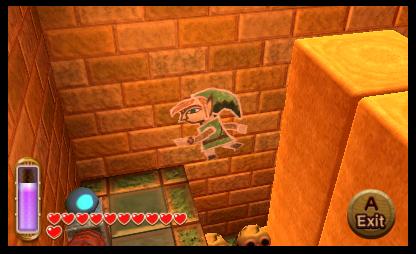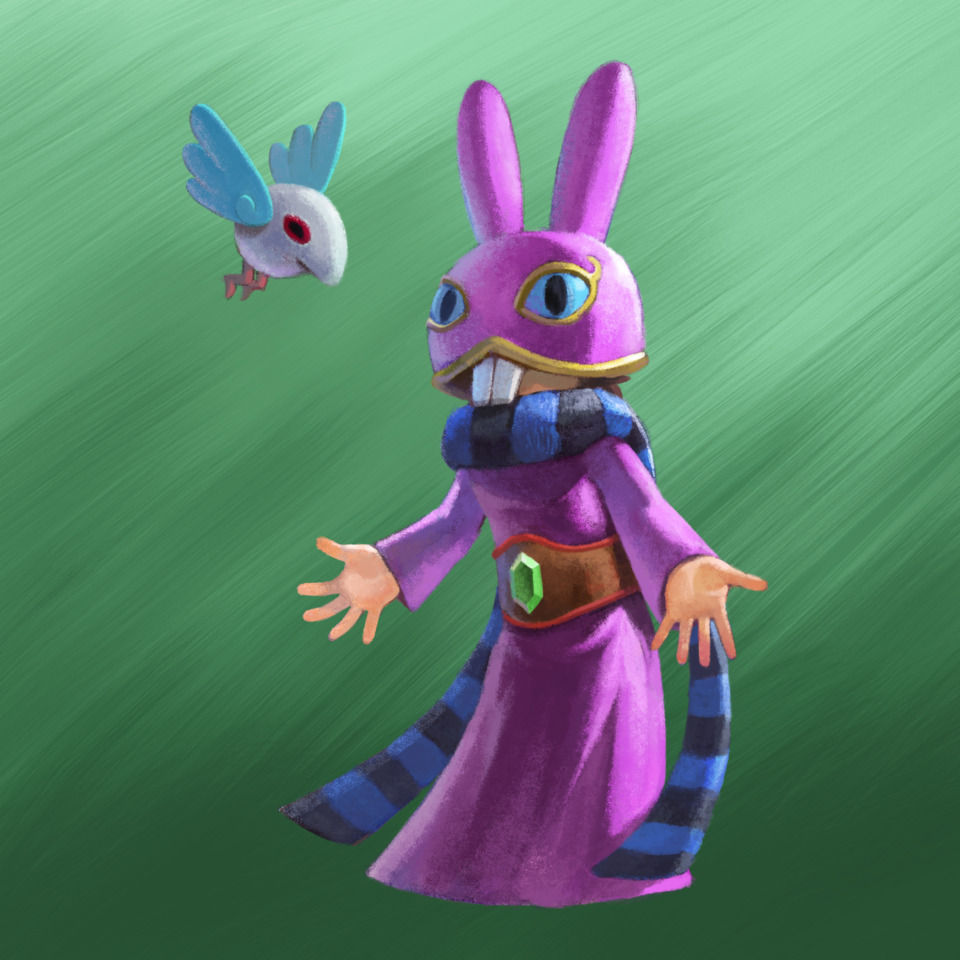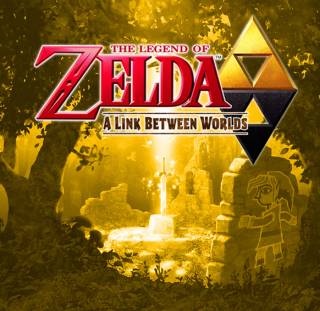A magical adventure that perfectly rides the line between nostalgia and fresh creativity
Nintendo is a company that often has to ride a hard line between catering to nostalgia for the good ol’ days of gaming and creating innovative, fun new experiences. The Legend of Zelda is a series that has had some issues grappling with its identity over the past several years for completely understandable reasons. Twilight Princess and Skyward Sword, though generally liked, were often accused of having countless gameplay elements stuck in the past while other parts were trying unsuccessfully to break free from those shackles of series tradition.

So it comes with some level of surprise that the greatest breath of fresh air for the series since 2003’s The Wind Waker is this, A Link Between Worlds. ALBW is a direct 3DS sequel to the now 21-year-old Super Nintendo classic A Link to the Past. It is set in the same old Hyrule as the old game and has mostly the same music and sound effects as well. Cashing in on the heavy familiarity of a noted timeless masterpiece seemed like a really bold move on Nintendo’s part, or possibly just a foolhardy marketing gimmick. I am glad to report that this game is neither a cynical cash-grab nor a boring retread of old ideas. It is simply a magical, fun adventure that captures the best elements of the past while blazing new trails in a franchise that, in this gamer’s eyes, had begun to lose its luster.
The premise of A Link Between Worlds should be familiar to any Zelda fan. Link, a young, sleepy and unassuming boy, finds himself caught in the middle of a conflict to take over the world. Very quickly, you are tasked with exploring a variety of dungeons to try to stop Yuga, the game’s main antagonist, from obtaining the power of the mystical Triforce. Link quickly fills his role as the classic chosen hero, just as expected. The story isn’t terribly deep or nuanced, but it gives enough motivation to explore the vast and colorful world, and it has a few surprises for series veterans here and there. Yes, Princess Zelda is present. Yes, she becomes captured at some point and you must obtain x number of MacGuffins to save her.
It’s in the approach the game takes to game progression that really feels fresh. ALBW experiments with a new item system in which you can rent most of the game’s crucial items, such as the bow, hookshot, bombs, boomerang, and some fun new tools, from an odd rabbit-esque character named Ravio. You gain the ability to pay a nominal fee to temporarily rent any and all of these items from Ravio after only a dungeon or two, which shakes up the traditional format of Zelda dungeons a bit and allows for much more exploration and freedom right out of the gate. In place of the old magic meter and item inventory systems, every item and ability drains the same recharging power meter. This acts to assuage the frustration with running out of bombs or arrows deep in a dungeon, or not having enough magic power to really experiment with items. It’s a nice touch.

If Link falls in battle, Ravio will send his little bird…thing to retrieve your rented items from you. Later on in the game you get the ability to pay a much steeper price to keep the items for good, but rupees (the series’ ever-present currency) are extremely plentiful. Throughout the course of the entire game, I didn’t die a single time, so I never lost any of my rental items. My experience may not be indicative of the general populace since I have played every game in the series multiple times, but I was wise enough to keep a fairy in a bottle for insurance and only needed it once. Ultimately, the real benefits to owning the items are aesthetic (rented items have dumb purple bunny ears on them) and practical (you can only upgrade items that you properly own).
The second major new gameplay mechanic in this game is the ability to turn into a flat painting on any wall and navigate around corners or through tight spaces. Though it initially seems like just another gimmick, this power is used in wildly creative ways through the course of the game. I often found myself baffled at the solution to a puzzle just because I didn’t think about the implications of the ability to flatten myself against any broad-enough surface. The ability managed to stay fresh and charming through the entirety of the adventure.
Just like A Link to the Past, an entirely new world opens up after the first few dungeons. Instead of the Dark World, which was intrinsically tied to the regular Light World, “Lorule” (yeah, it’s a dumb name but it works) is a fractured separate world entirely. You reach the world through little rifts that open up all over Hyrule which you enter by using your wall painting ability. Crossing between the worlds becomes a key component of many navigation puzzles, and a readily-available fast-travel system keeps navigation from getting tedious. This is done through widespread weather vanes (which also act as save points, the third time this series has required such checkpoint markers) that are easily accessible. The only annoyance I had with these birdlike beacons was the recent Nintendo imperative of telling you every half hour or so to take a break, even if you did put the 3DS into a sleep mode and actually take a break.
The new format for the items and abilities meant that you are given freedom really quickly to tackle the game’s numerous dungeons and sidequests in whatever order you choose. The dungeons themselves are still centered around specific items and abilities, but the ability to go almost anywhere right off the bat meant that I was constantly getting sidetracked by the game’s abundant mini-games, side quests, hidden items, and optional treasure rooms. I was never disappointed by the fun level of challenge offered in the dungeons, and the twists on old boss designs were fun. I was never at a loss of what to do next and I enjoyed myself thoroughly from beginning to end. The format of the adventure is ultimately familiar but creatively different in enough ways that it felt like a new experience.
Another area where the game really shines is in its presentation. The game’s soundtrack is truly something special – I’d highly recommend playing with headphones. There are numerous unique versions of classic songs that change as you progress through the game, and some of them were so different from the original versions that I didn’t notice that it was the old song at first. The ones that were familiar brought a smile to my face and made chills run down my neck, starting with the title screen music. The production level of the soundtrack is incredible – clearly Nintendo put a lot of time and effort into it.

A note of contention before release was the art style of the game. It looks simple and bland when viewed in still screenshots or in captured video, but on a 3DS with the 3D turned all the way up, I can confirm that this is one of the best looking games on the system. There is extremely nice lighting and texture work that makes the effects really pop on the small portable screen, and there is a verticality to the design of certain caves and dungeons that makes usage of the 3D slider a must. I feel sorry for those that will play this game on the feature-lacking 2DS system. The art style lends itself to a classic Zelda feel while also being very expressive and flashy. It didn’t take long for me to be sold on the visual presentation.
The Legend of Zelda: A Link Between Worlds feels like the real deal. I have enjoyed the portable Zelda games in the past, sometimes even more than the recent proper console games, though they always felt experimental in nature and were mostly fun spinoffs. My entire 16+ hour journey to 100% completion in this game felt like pure magical bliss. It always managed to surprise me right when I thought I had a handle on how everything would progress. It knows it’s a video game and it relishes the fact, even if it means there’s some inherent silliness in the story and scenarios the game puts you through. I highly recommend this game. I didn’t think I’d say it, but A Link Between Worlds is one of my very favorite games in the series by far and has rekindled my hope for what’s to come. Play it!
